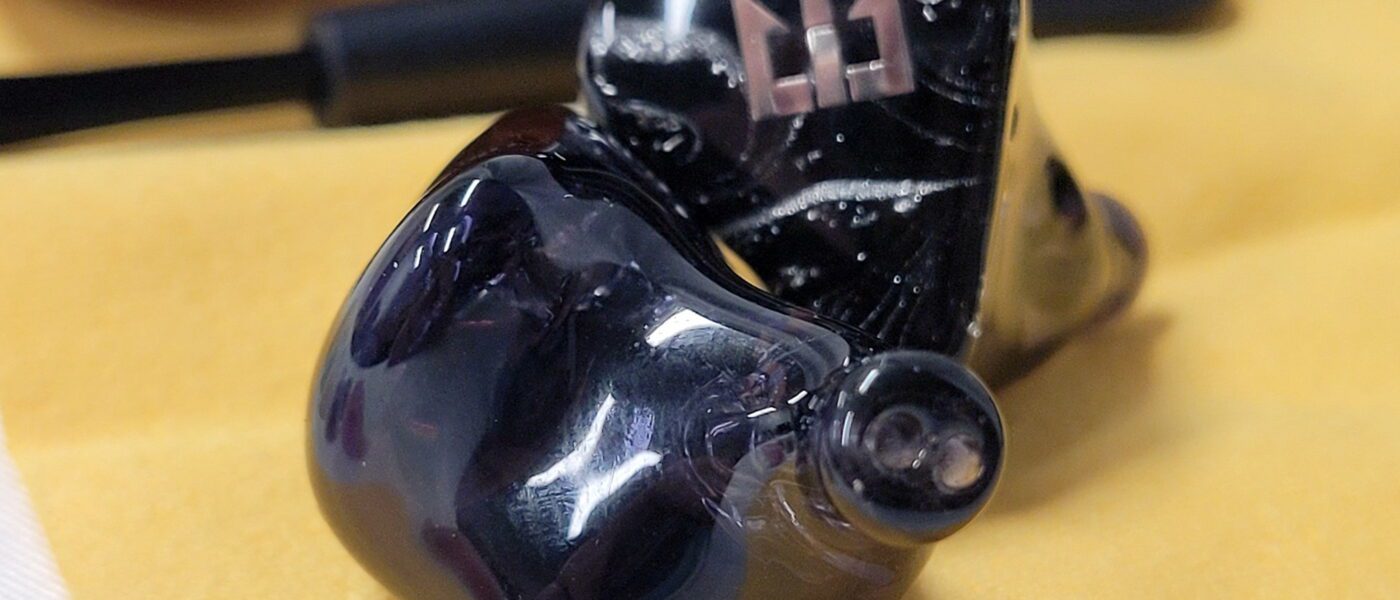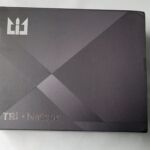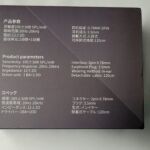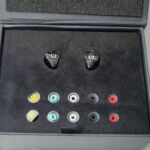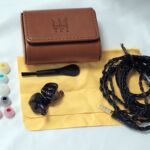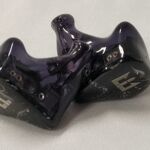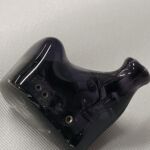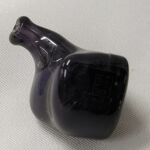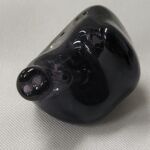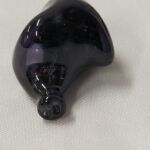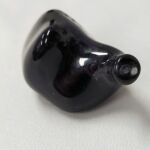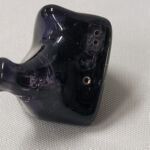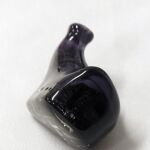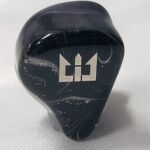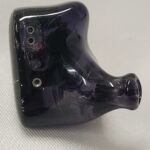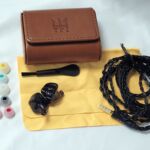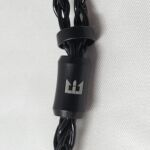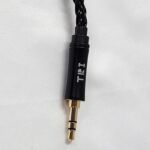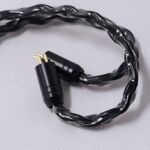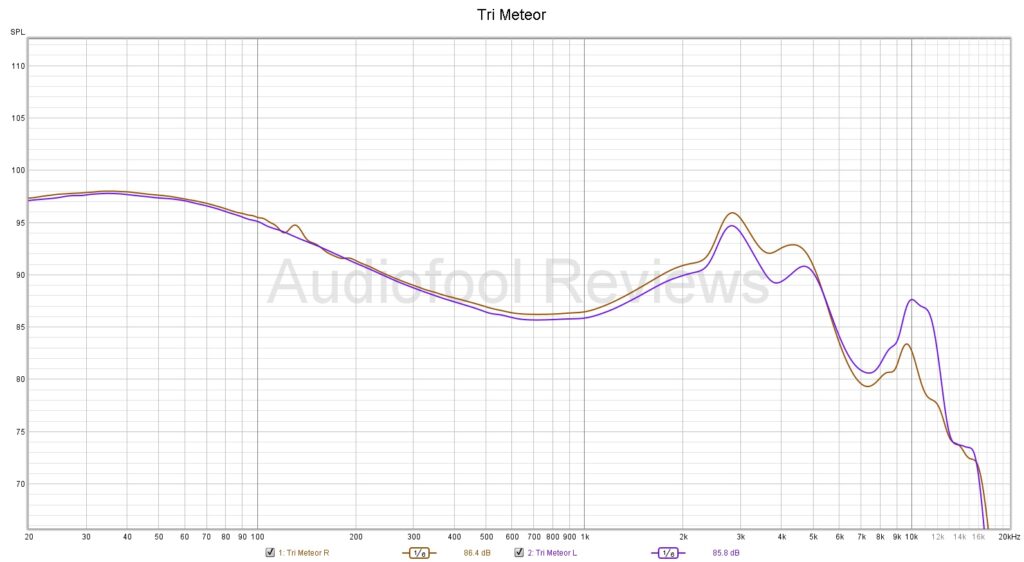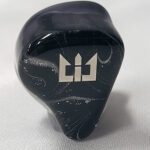TriAudio Meteor
disclaimer: The Tri Audio Meteor was sent to me by KeepHifi and Chifi Audio Reviews on Facebook for purposes of review. I have previously reviewed the Tri I3 and I4 earphones so was looking forward to this tour. I will be sending the Meteor on to the next reviewer upon completion and have received no financial incentives for this review, nor do I have a financial interest in Tri Audio, KeepHifi, or Chifi Audio Reviews. For more information about the Meteor or to purchase one, please visit KeepHifi.
Unboxing / Packaging:
The Meteor comes shipped in a slip-cover box in gray with metallic silver text and logos. One thing that is a bit odd is there is no mention of what the product in the box is. You can get a pretty good estimate from the specs on the reverse in multiple languages but with no picture and no mention of earphones or even audio on the box front it could lead to some confusion. Beneath the slip-cover is a matte black book fold box with no logos, names or other adornments. Lifting the top reveals the earpieces at top and 5 sets of tips in the foam surround below them Tips have different color stems depending on size and are arranged from large to small (left to right). Lifting the tray reveals a leatherette case on the left and an accessories box to the right. The complete kit includes the earpieces, cable, case, tips, cleaning cloth, and cleaning tool. Its a fairly standard kit at the $100 price point and about what we have come to expect. A modular cable might be nice but those usually start appearing in the next bracket up the price spectrum.
Build/Fit:
Shells are mid-sized acrylic material with nozzles built into the inner shell rather than using a separate part. The inner shell is translucent gray while the outer is a opaque black with silver threads marbled through it and Silver Tri logos on the face. Nozzles sit forward of the main body of the in-ear with two sound bores and a tip retaining lip formed into them. Nozzles are fairly long and allow for good seating depth but with the bulk of the body sitting behind the nozzle isolation is somewhat limited. There is a single vent on the top side immediately in front of the bi-pin connector. When illuminated by flashlight you can see a pcb at the rear that handles the cross-over, the dynamic driver is angled in the shell and the balanced armature sits just behind the nozzle. There is a tube run from the face of the dynamic to the nozzle but the BA seems to directly butt into the nozzle. I found the semi-custom shape of the Meteor quite comfortable for long wear and think all but the smallest ears will find these comfortable due to the smoothed rounded surfaces and small size.
Internals:
The Meteor is a dual driver hybrid using a 10mm dynamic driver with a beryllium coated diaphragm handling the lows and lower-mids while the upper registers are handled by a Knowles 29689 balanced armature. The Knowles 29689 is considered a full range driver but trails off sharply below about 350Hz so it is best paired with another driver to handle the deepest of the lows. The Meteor has an extremely low nominal impedance of 12Ω and a sensitivity of 105 dB/mW (@1kHz) which puts it in the class of iems best suited for low powered sources like phones, tablets, and dongles. While it does scale some qualitatively but doesn’t need the extra potency of higher end sources. I found the Meteor paired best with dongles like Questyle’s m12 and Cayin’s Ru6 and Daps like the Hiby R2 and Hidizs Ap80ProX. For higher powered units low gain is recommended as some hiss is detectable with high gain in most cases and it leaves little usable volume range (if any). Even with DAPs like Cayins N3 and Hiby’s R2 Saber, low gain as the best option as it yields a blacker noise floor and plenty of volume to get as loud as the user demands. Additional gain only serves to increase the noise and does little to help the sound.
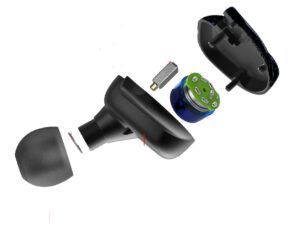
Cable:
The cable is a standard length (1.2m) cable terminated with a 3.5mm TRS jack in a straight housing with a short strain relief. Color is gloss black for the cable itself and all hardware. The cable itself is listed as 8-core 5N oxygen free copper and is an 8-wire braid from the jack to the splitter and then 4 wire braids from the splitter up to the earhooks. There is a chin-slider in matching matte black finish immediately above the splitter. Termination at the north end is 0.78mm bi-pin connectors with the right marked with red at the pin base.
Sound:
Bass:
The Meteor has a fairly large low end emphasis that covers the entire bass range with sub-bass having good rumble and some texture but this hints at the trend we will see with the meteor. Sub-bass roll-off becomes notable in the lower 30Hz range so while there is plenty of sub-bass in the 50Hz range it thins some as we move downward. Mid-bass has good slam but here again we have a bit less texture than I’d like to see. The meteor chooses smoothness and musicality over technicals every time. Those looking for a more technical less organic sounding meteor should look at the Thieaudio Legacy 2 as it shares a similar construction, and internals but makes the opposite choices. There is some mild bleed as we move into the lower mids.
Mids:
Ignore the graph as those expecting a deep V wont find it here. The bass bleed does translate to some extra warmth and a little smoothing of the lower mids but vocals have good weight and there is enough detail that guitar growl is well defined if not as sharp edged as some. The true mids are very slightly recessed but have good clarity while still retaining enough weight to sound very organic. The Meteor mids are at their best with acoustic guitar and piano where the tonality shines and at their worst with string quartet pieces where they just don’t quite have enough energy to be entirely realistic. There is a mild uppper-mid climb forward but it never reaches the level of the mid-bass which helps keep the Meteor in balance and keeps female vocals from standing forward of the mix. Again we see the trade off of a bit of energy for polite presentation as the meteor has no sibilance, nasal-ness (is that a word?), or harshness in this range.
Treble:
Lower treble drops back again fairly quickly after the upper-mid push and keeps the Meteor from becoming fatiguing. Most of the treble’s energy is at or below the 5kHz mark which gives vocals a nice lift and does help avoid stridency that usually arrives around 9kHz. There is a bit of a bump between 10kHz and 12kHz before rolling off fairly quickly above that (to my ear). It isn’t the most airy treble so don’t expect a ton of sparkle up top as again we see a conservative tuning that does a lot to avoid offending sometimes at the expense of having enough energy to be entirely realistic. Snare rattle is good but cymbals suffer with that lack of energy in the treble range.
Soundstage / Imaging:
Stage on the Meteor is wider than deep with some height. Instrument separation is good enough that seating the orchestra is straight forward if winds up feeling a little shallow. Imaging is good with movement on the stage being easy to track and placement of instruments being mostly proper with a few minor overlaps. Layering is good until things get really complex and fast in the low end and then some blurring and compression does creep in.
Comparisons:
With the retail price of $109 for the Meteor, I tried to keep compares as close as possible so the least expensive are the Aria and Titan S at $80 USD retail and the NM2 and Legacy2 both retail at $99.
Dunu Titan S – These two are a pretty stark contrast visually as the Titan S is very industrial looking compared to the Meteor’s more polished art inspired look. Size slightly favors the Meteor but not by enough to be an issue for those with normal sized ears. Construction is solid on both although materials differ. The shipped cable with the Meteor is a bit better than that provided with the Titan S so the $20 at least gets a better cable if nothing else. Sound wise both are similar in that an organic signature is more important than rendering every last detail. I find the Titan S is about the best of the budget single dynamics so its edge lies in the lows where it digs a bit deeper and is a cleaner presentation. The best feature of the Meteor is likely its mids and its timbral accuracy but the Titan S is very good both these aspects as well. I found the thing that separated the two the most is staging where the Meteor has a larger and more uniform stage.
NF Audio NA2 – Similar shells, similar kit, similar price, similar dynamic drivers, and similar signatures in some ways. Both present a smooth sound with good mids. The NA2 has less mid-bass and is more balanced compared to the bottom heavy Meteor. The NA2 has more of an upper-mid emphasis than the Meteor as well that helps vocals stand out a bit more (for better or worse). Both are polite and non-offending and neither has a ton of treble extension but here the Meteor has an edge in detail.
Moondrop Aria – The Aria is metal shelled and more industrial looking than the Meteor (less so than Titan S though). There has been some criticism of the paint on the Aria flaking as well so that may be a factor for some. Internally the Aria is a single dynamic vs the hybrid of the Meteor but both are tuned again for timbral accuracy and a polite signature so the two have quite a bit in common. The Meteor has more bass than the Aria and can slam a bit harder for those looking for more bass power. Both have good mids with the Aria having roughly the same level of detail so that doesn’t help distinguish. At the top end the Aria rolls off a bit earlier than the Meteor. I like the snap of percussion and the crash of cymbals a bit better on Meteor with its extra energy up top.
ThieAudio Legacy 2 – you could argue for twins separated at birth but the reality is more like cousins. Both have similar construction and basically the same internals. Both use a beryllium coated 10mm dynamic driver and a Knowles 29689 balanced armature so you’d think they’d be sonic duplicates but they are far from it. These make a good study of why tuning matters. The Meteor has better timbre and a more fluid presentation while the Legacy 2 has more clarity in top end and more detail in the bass but at times can be a bit harsh.
Thoughts / Conclusion:
The $100 in-ear market is a very crowded space these days with single dynamics, hybrids, and Tribreds all competing for would be buyers dollars. Any time I am asked to review an in-ear in that space I sort of cringe as all too often they overlap significantly and trying to rank them is an exercise in futility. Basically all do some things well and all are flawed and in the end it is mostly a matter of what your personal leanings are as to which are “better”. The Meteor fits into that class. It is a good listen in some respects but has some definite shortcomings as well. At the low end, I found a lot to like as sub-bass has good depth and mid-bass good slam, but it does have as much texture as I’d really wish for. In the mids the meteor shines but again we see a mix of good and bad with Acoustic guitar being probably its best timbre and violin its most lacking. The Meteor is obviously tuned to avoid stridency and anytime that is done it results in instruments that need to be right on the edge of too energetic are toned down a bit more than entirely real. The Meteor will please the treble shy or those looking for an organic sounding in ear with none of the harshness that is typical of this price bracket. They are smooth and lush with no hint of fatigue in the mix.
-
Bass - 7/107/10
-
Mids - 6/106/10
-
Treble - 6.5/106.5/10
-
Soundstage - 6/106/10
-
Imaging - 7/107/10
Summary
Pros: solid build, good kit, non-fatiguing organic signature.
Cons: Trades detail for smooth, non-offensive tuning, lots of low end but top end rolls off fairly early.

